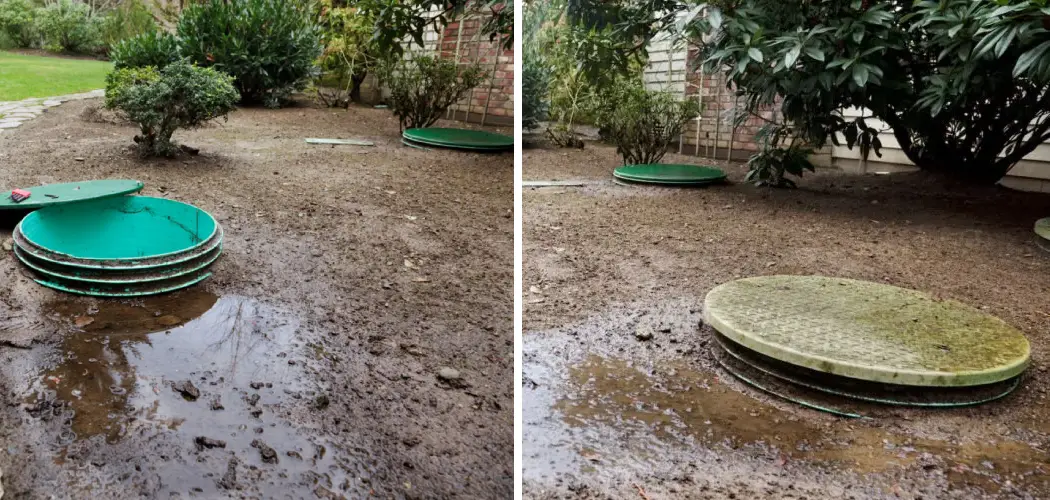When rainwater enters a septic tank, it can cause the system to become overloaded and back up. This can lead to sewage overflowing and creating an unhealthy environment in your yard. Additionally, water around your septic system could leach chemicals into the ground and contaminate nearby drinking water sources.
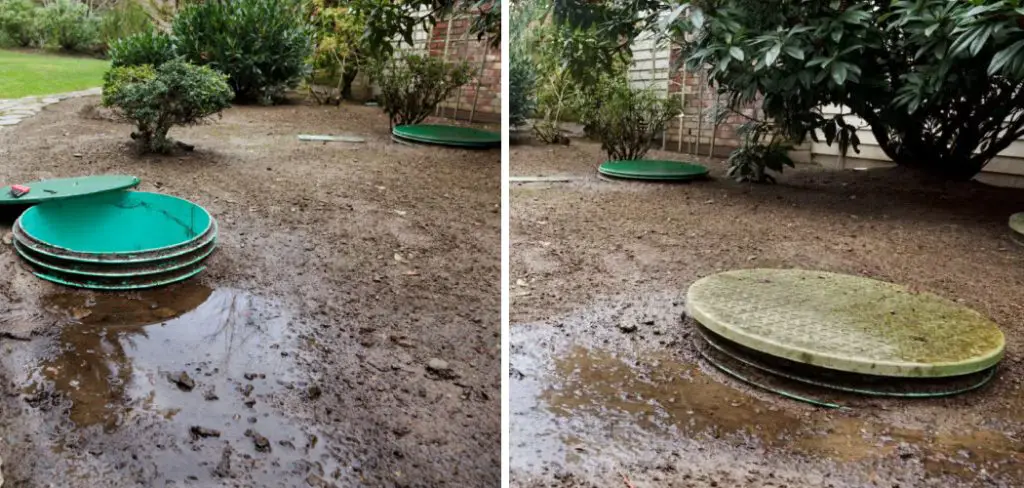
Keeping rainwater from entering a septic tank is important for several reasons. Rainwater can cause the water level in the septic tank to rise, causing problems with the treatment of wastewater and potentially leading to backups.
Additionally, rainwater can introduce contaminants into the system that could be harmful to both people and the environment. In this blog post, You will learn in detail how to keep rainwater out of septic tank.
Step-by-Step Processes for How to Keep Rainwater Out of Septic Tank
Step 1: Inspect the Area
Check your septic system and the surrounding area for any possible sources of water that could be entering the system. Look for cracks, gaps or holes in pipes, seals and joints that could be allowing rainwater to enter.
Step 2: Install a Rain Diverter
A rain diverter is a device that deflects rain from your roof away from your septic tank. A rain diverter should be installed on the nearest downspout near the septic tank. A gutter filter is designed to filter out debris and sediment from rainwater before it enters the septic system. Installing a gutter filter will reduce the amount of sediment and debris entering the system.
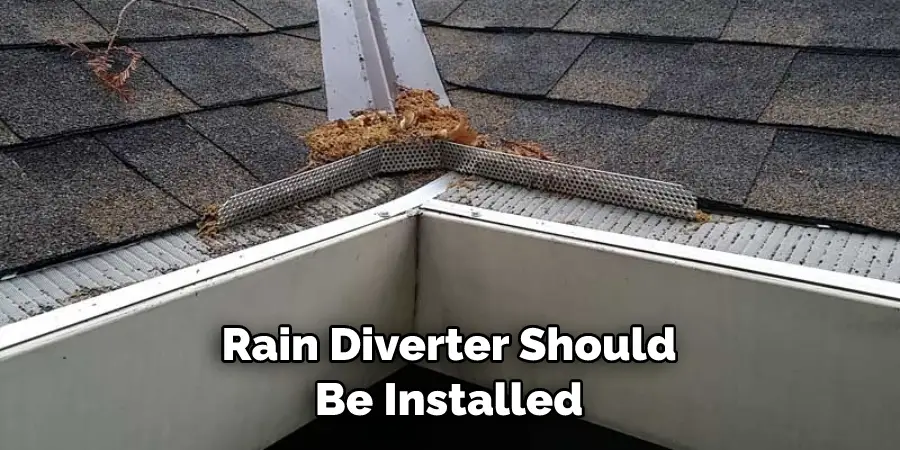
Step 3: Install a Septic Tank Cover
A septic tank cover will help to keep large amounts of rainwater from entering your septic system. The cover should be sealed with an appropriate sealant to prevent water from entering the tank. Ensure that the drainage system is functioning properly and draining away from the septic tank. If the drainage system is not working, rainwater could enter your septic tank.
Step 4: Install a Drainage System Filter
A drainage system filter will help to keep sediment and debris out of the drainage system. This will prevent it from entering your septic tank and clogging up the pipes. Regular cleaning of your septic tank can help to reduce the amount of sediment and debris that enters your tank. Cleaning should be done at least once a year or more often if needed.
Step 5: Install a Septic Tank Riser
A septic tank riser is a device that sits above the ground and allows access to the top of the septic tank for inspection or cleaning. Installing a riser will help to reduce the infiltration of rainwater into your septic system. It is important to grade the area around your septic tank properly. This will ensure that water flows away from the system and not into it.
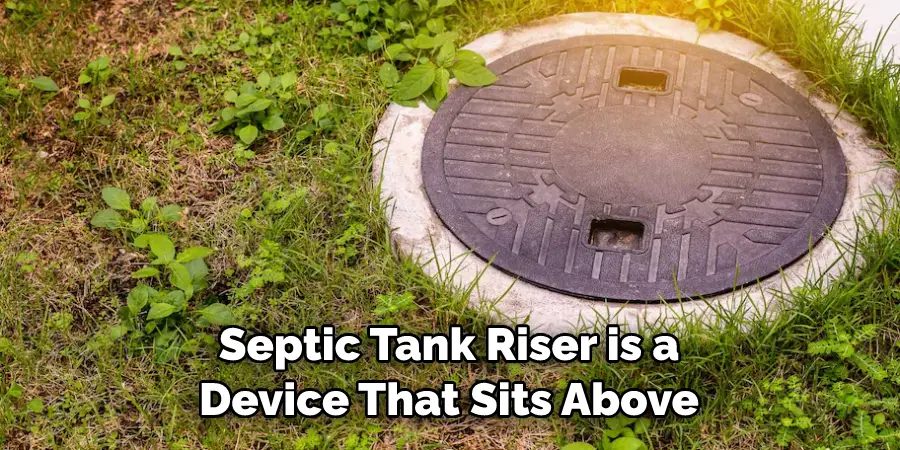
Step 6: Plant Vegetation Around the System
Planting vegetation around your septic system can help absorb rainwater before entering the septic tank. This will reduce the amount of water entering the system and help keep it functioning properly. By following these steps, you can ensure that rainwater does not enter your septic tank and damage it or cause it to malfunction.
Precautions for How to Keep Rainwater Out of Septic Tank
- Ensure the area surrounding your septic tank is well-drained, such as sloping away from the septic tank. This will help to avoid water pooling near or within the septic tank itself and prevent rainwater from entering it.
- Regularly check that your rain gutters and downspouts are not clogged, as this can cause water to overflow and accumulate in the septic tank.
- Install a rain diverter kit over your septic tank in order to divert any water away from it during heavy rains.
- Consider planting trees around the septic tank with their roots angled away from it in order to absorb rainwater and keep it away from the septic tank itself.
- Ensure that any drains or pipes around your home are properly connected to avoid leaks towards the septic tank.
- If your yard is prone to flooding, consider installing flood protection systems such as sump pumps or French drain systems.
- Avoid doing any heavy gardening or landscaping over the septic tank, as this can cause water to accumulate above the tank.
- Finally, regularly inspect your septic system to ensure that it is working properly and that there are no cracks or leaks. This will help to avoid rainwater entering the septic tank and damaging it.

Following these precautions should help keep rainwater out of your septic tank and ensure your system runs smoothly.
How Can You Prevent Ground Water From Entering the Septic Tank?
Groundwater is the primary source of infiltration for septic tanks and can lead to a number of problems, including flooding, backups, and overflows. Therefore, it’s important to take steps to keep groundwater from entering your septic tank. You can prevent groundwater from entering by installing an effective drainage system. A properly designed drainage system should remove water from around the septic tank and transport it away from the area. This can be done by installing a perforated pipe, or French drain around the perimeter of the septic tank, which will divert any ground water away from it.
In addition to an effective drainage system, you should also take steps to ensure that your landscaping directs water away from the septic tank. Make sure to slant any landscaping away from the tank and create a route for surface runoff to follow, such as a swale or a ditch. Finally, you should also consider installing barriers, like a membrane or impermeable liner, around the perimeter of the tank. This will help keep groundwater from entering the septic tank and causing problems.
What Type of Maintenance Do You Need to Perform on Your Septic Tank to Prevent Rainwater From Entering It?
You need to take a few important maintenance steps to keep rainwater out of your septic tank. These steps include:
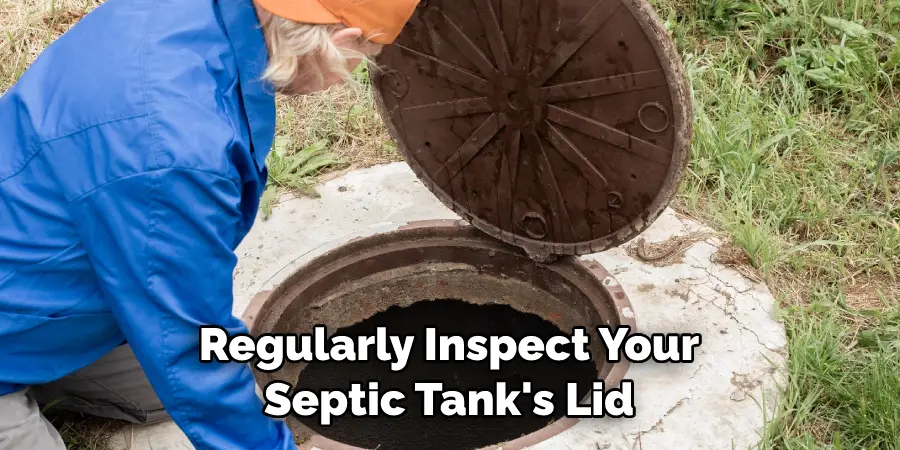
- Regularly inspect your septic tank’s lid to ensure it is in good condition and properly functioning. If the lid is broken or not secure, then rainwater could easily enter the tank.
- Make sure that your gutters and downspouts are in good condition and redirect water away from the septic system area. If not, then rainwater could be running directly into your tank and flooding it.
- Consider installing a watertight cover for your septic tank to protect it from any incoming rainwater further.
- If you are having problems with runoff from other areas of your property, such as a driveway or patio, consider creating a channel that will direct the water away from your tank and into a different yard area.
By taking these steps, you can help keep rainwater out of your septic tank and ensure it continues functioning properly.
What Are the Risks Associated With Allowing Rainwater to Enter a Septic Tank?
Rainwater entering a septic tank can cause several problems, such as reducing the overall capacity of the tank. Too much rainwater entering the tank can overwhelm the system and increase pressure on drains and other components. This can lead to a breakdown of pipes, leaks, and even complete system failure. Additionally, rainwater can carry contaminants that can disrupt the natural bacterial balance in the tank, leading to clogs and odors. Finally, allowing rainwater into a septic tank can also increase the risk of ground and surface water contamination due to overflow.
To avoid these potential risks, it is important to practice proper maintenance and take steps to keep rainwater out of the septic tank. Doing so will ensure that your system is working optimally and reduce the risk of costly repairs or environmental damage. The most effective way to keep rainwater out of a septic tank is to install a drywall inlet filter. This device is designed to catch any excess water on the surface before it enters the tank and can be easily installed around the drain field. Another option is to install a cover over the tank inlet or an overflow pipe diverter, which will redirect excess water away from the tank.
How Can You Avoid Costly Repairs Due to Rainwater Entering Your Septic Tank?
Water is the lifeblood of any home, and one way to ensure that your home’s plumbing runs smoothly is to keep rainwater out of your septic tank. Rainwater can damage a septic system with excess water, flooding, and other issues that can be costly to fix. Here are some tips on how to avoid letting rainwater into your septic tank:
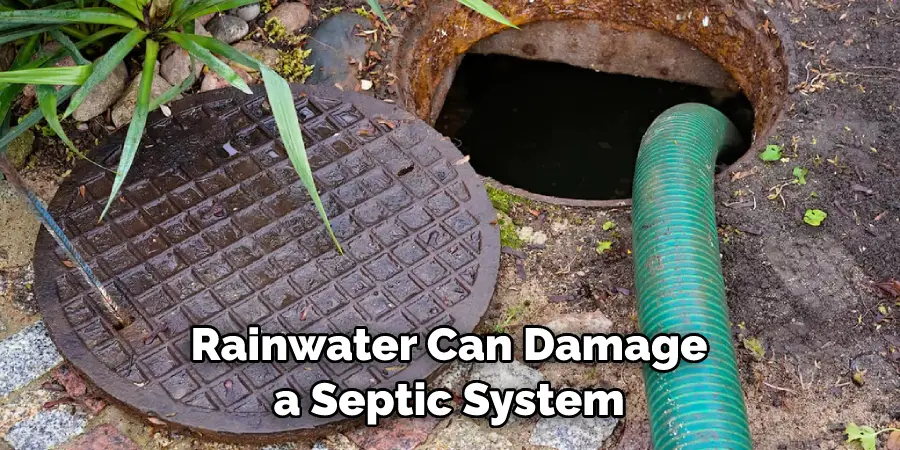
- Check for Leaks: Inspect the area around your septic tank for any possible leaks or cracks caused by rainwater. Make sure to repair any damage quickly so that rainwater does not enter the tank.
- Install a Gutter System: Installing a gutter system in your home can help to direct any rainwater away from the septic tank. This will also help reduce the chances of flooding and water damage in other areas.
- Install a Splash Block: A splash block is a concrete block that is placed under downspouts and gutters that deflects any large amounts of rainwater away from your septic tank.
- Install a Septic Tank Cover: Installing a cover on your septic tank will help keep rainwater out and prevent any seepage that could result from heavy rains.
By following these tips, you can help ensure that your home’s plumbing system remains in good condition and can avoid costly repairs due to rainwater entering your septic tank.
Conclusion
In conclusion, it is important to be aware of how rainwater can affect your septic tank and its performance. Proper maintenance, proper installation, and preventative measures are key when trying to keep rainwater out of a septic tank. After you have installed a quality system that meets the local codes, there are still several ways that you can add extra protection against rainwater.
Installing gutters and downspouts can direct water away from the system, making sure that it does not enter your septic tank. Adding a waterproof layer to the exterior of the tank can also help protect against the infiltration of rainwater. I hope this article has been beneficial in learning how to keep rainwater out of septic tank. Make Sure the precautionary measures are followed chronologically.

